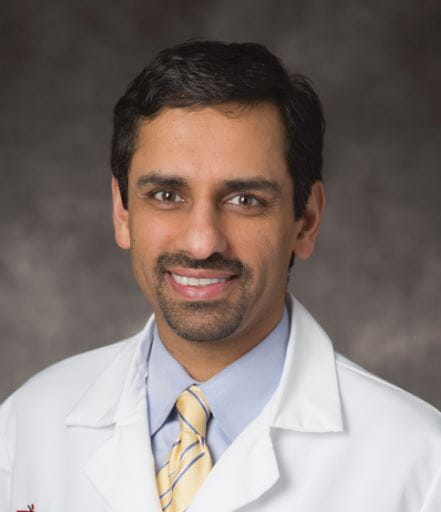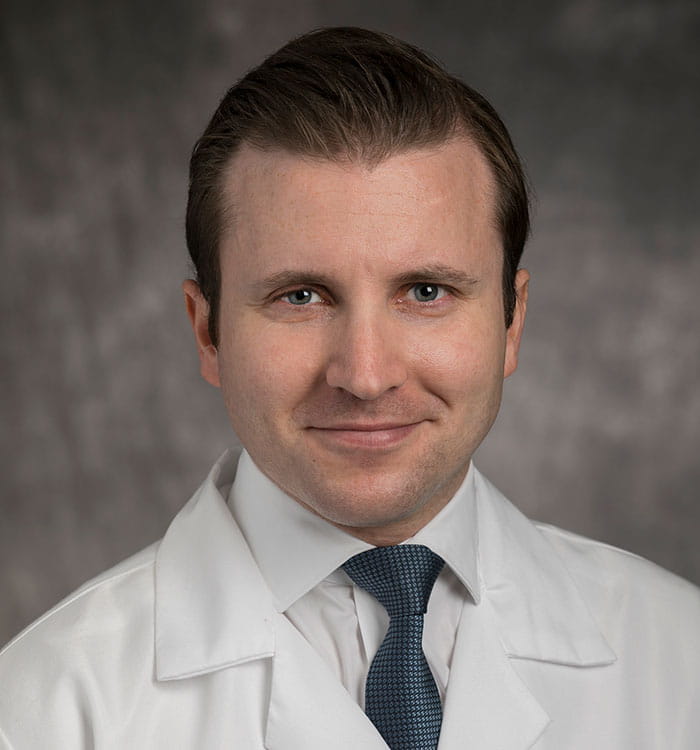Limb-Saving Surgeries Restore Leg of Teen Injured in Devastating Waterskiing Accident
June 20, 2021
Innovations in Cardiovascular Medicine & Surgery | Summer 2021
Last August, a fun Saturday on the lake quickly turned harrowing when a teen's leg became entangled in a waterskiing rope. Unaware of the problem, the jet ski driver hit the gas, causing the tow rope to nearly sever the girl's lower right leg. As the patient was airlifted to University Hospitals Cleveland Medical Center from neighboring Geauga County, a full trauma activation was set in motion at the region's only Level 1 pediatric trauma center.
 Vikram Kashyap, MD
Vikram Kashyap, MD Edward Davidson, MD
Edward Davidson, MDOn call that Saturday evening was Vikram Kashyap, MD, Chief of Vascular Surgery and Endovascular Therapies at UH Cleveland Medical Center and Co-Director of the Vascular Center at UH Harrington Heart & Vascular Institute. He rushed to the hospital, as did Edward Davidson, MD, Director of Cranio-Maxillofacial Plastic Reconstruction Surgery.
“The tow rope acted like a garrote, cutting clear to the bone and causing extensive soft tissue destruction,” says Dr. Kashyap. “The patient had an occluded artery and a contused tibial nerve, with no ability to move or feel her foot. The discussion we were having was whether to perform an above-the-knee amputation on a 17-year-old girl.”
Faced with a distraught family, the team had to determine the best course of action, Dr. Kashyap says. “Given the patient's young age, we thought we should give her a chance to try and save her leg.”
First, he explored the popliteal fossa to identify the extent of damage and discovered a three-to-four-centimeter arterial crush injury. After harvesting a donor vein from her left leg, he performed a limb-saving bypass of the affected artery with the patient in a prone position to better visualize the popliteal space. Also, a fasciotomy was necessary to reduce pressure and preserve nerve function.
With blood flow restored, there remained cause for concern. “Looking at the injury, it seemed a bit grim,” Dr. Davidson says. “Even if we could salvage the limb, cover it and keep it alive, we didn't know how functional the leg would be.”
He moved muscle and tissue based on classic plastic surgery principles to support and protect the arterial repair so healing could begin.
Since the initial surgery, Dr. Davidson has performed six additional procedures to debride the wound and provide coverage. He knew that any grafted tissue needed to offer an active solution to avoid a permanent contraction at the back of the knee.
“Ultimately, we decided to use Integra®, a dermal replacement made of shark chondroitin and bovine collagen, as a template,” Dr. Davidson says. “The specially treated material provides a regenerative solution rather than a replacement solution.”
The team nursed the repair over several weeks until the regenerated tissue built up sufficient thickness before overlaying the area with a traditional skin graft. After some physical rehabilitation, the leg is nearly back to full function and range of motion. In fact, the patient is ready to go jogging. Soon, Dr. Davidson will revise the scar from the donation site on the other leg.
“Trauma is not like any other etiology that develops over time,” he says. “It is extremely sudden and mentally taxing, but this young woman has had such a great attitude.”
Fortunately, she was in the care of a multidisciplinary team of experts assembled at University Hospitals who are collaborating to provide advanced limb salvage and trauma care. “I always tell patients that reconstruction is not an event; it's a process,” Dr. Davidson says. “This case went beyond limb salvage to a return to normalcy. That is a credit to the entire team who helped take care of her.”
Adds Dr. Kashyap, “Here we are, less than a year later, and her bypass looks absolutely beautiful on ultrasound. We see a lot of challenging patients every day, and we experience too many not-so-great stories — especially in the COVID era. This is a story of resilience and healing that has been really inspiring.”
For more information, please contact Dr. Kashyap at Vikram.Kashyap@UHhospitals.org or Dr. Davidson at Edward.Davidson@UHhospitals.org.
Contributing Experts:
Vikram Kashyap, MD
Chief of Vascular Surgery and Endovascular Therapies
UH Cleveland Medical Center
Co-Director of the Vascular Center
UH Harrington Heart & Vascular Institute
Professor
Case Western Reserve University School of Medicine
Edward Davidson, MD
Director of Cranio-Maxillofacial Plastic Reconstruction Surgery
UH Cleveland Medical Center
Clinical Assistant Professor of Surgery
Case Western Reserve University School of Medicine


